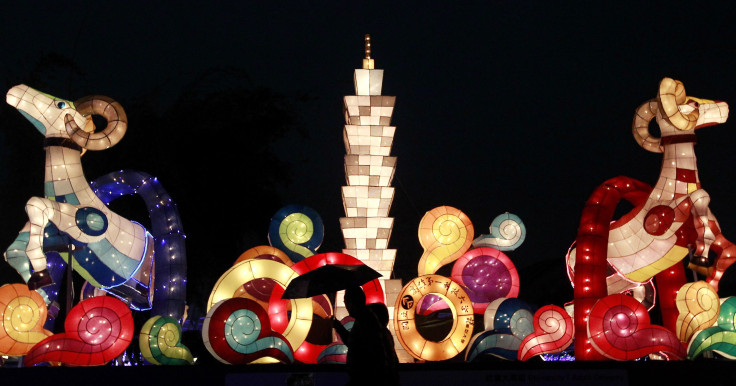Lantern Festival 2015 Dates, Facts, Traditions And Food: How To Mark End Of Chinese New Year

The Lantern Festival is celebrated on the 15th day of the first month of the lunar calendar, and it falls on Thursday this year. The festival, observed by the lighting of lanterns, also marks the end of Chinese New Year celebrations, which began on Feb. 19. The Lantern Festival is especially celebrated by cities in Asia with large Chinese communities. From releasing floating lanterns in Taiwan to massive lantern displays in Singapore, each city has its own take on the event.
The festival also is known as the Yuan Xiao or Shang Yuan festival. The word “yuan” (元) refers to the first month of the lunar calendar, and “xiao” (宵) is an former way to refer to night in Mandarin. Thus, Yuan Xiao and Shang Yuan mean “night of the first month” or “first month” festival, respectively.
The Lantern Festival was observed as early as the Western Han Dynasty in 206 B.C. to A.D. 2. Children get to play outside with lanterns and try their hand at solving lantern riddles. Lantern riddles, or “deng mi” (灯谜) in Mandarin, are written on slips of paper attached to lanterns, and they’re notoriously hard to solve, requiring a good grasp of the Chinese language. The riddles involve a statement and a prompt that provides a clue as to whether the answer is a proverb or a word. Click here for a list of Mandarin lantern riddles.
Streets were traditionally festooned with red round lanterns, although these days lanterns can come in any shape or size. Hong Kong and Taiwan are known for their giant, extravagant lantern structures in the shape of animals that can reach several floors high. Some cities also celebrate the festival by releasing floating lanterns.
Sticky glutinous rice balls called tang yuan are eaten during the festivities. They also are known as “yuan xiao” after the festival. The word “tang yuan” (汤圆) sounds like the word for “reunion” in Mandarin, “tuan yuan” (团圆), making the eating of the rice balls symbolic for keeping the family together. Northern Chinese tend to eat yuan xiao, which are savory, while Southern Chinese tend to eat tang yuan, which are sweet. Savory glutinous rice balls can include minced meat and vegetables. The sweet ones are traditionally filled with ground peanuts, sesame or red bean paste, though modern variations can include chocolate or pumpkin paste. The balls can be served in a red bean soup, black sesame soup, a spicy ginger broth or even just plain hot water. Tang yuan also are eaten at the start of the Chinese New Year.
The Lantern Festival also takes on the additional role as serving as one of the two Chinese equivalents of Valentine’s Day; the other falls on the seventh day of the seventh lunar month. When the festival coincided with the Western Valentine’s Day on Feb. 14 last year, Hong Kong saw a spike in marriages, with 493 pairs of couples getting married that day compared with 187 pairs on Feb. 13, 2013, according to CNN.
© Copyright IBTimes 2024. All rights reserved.












